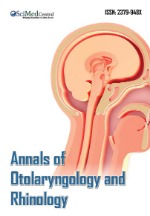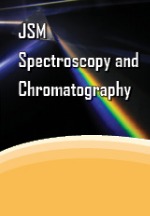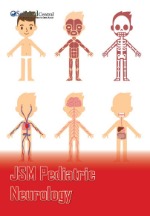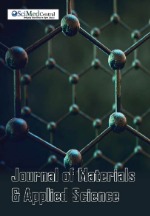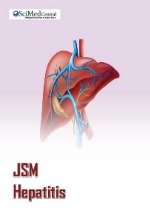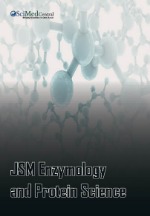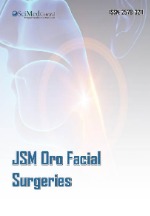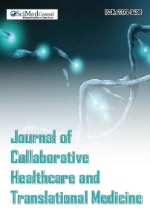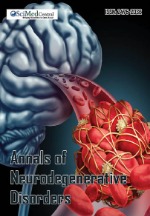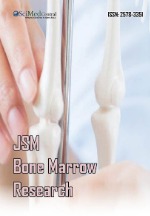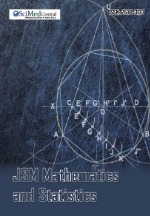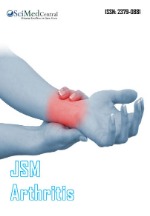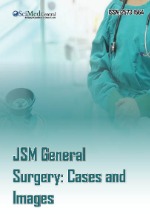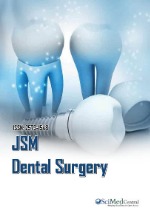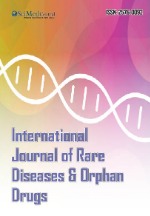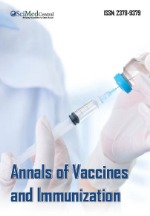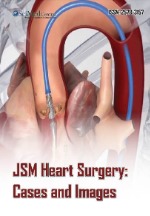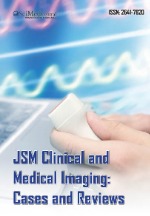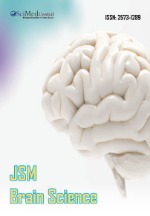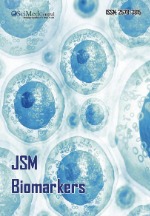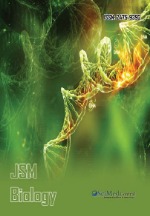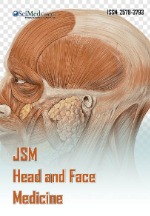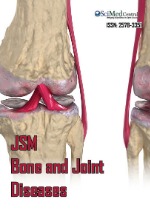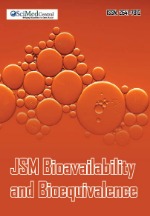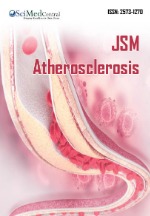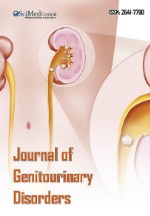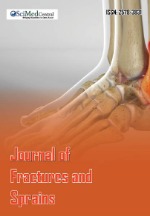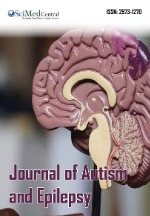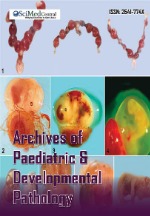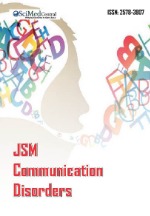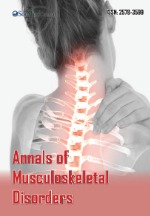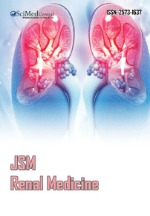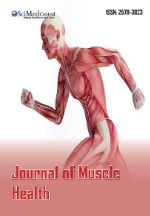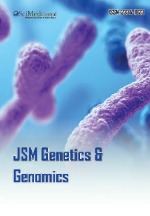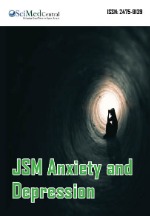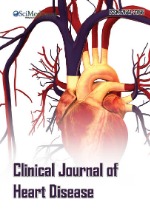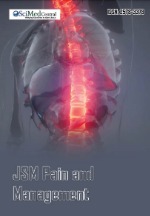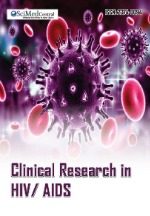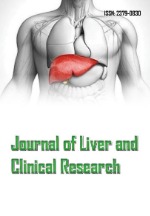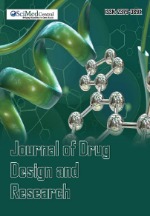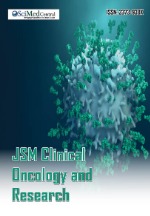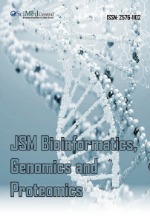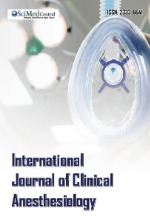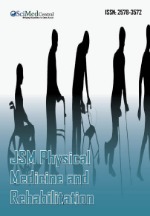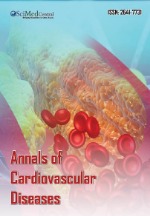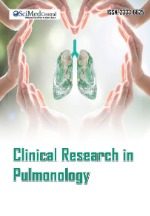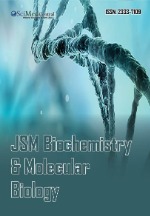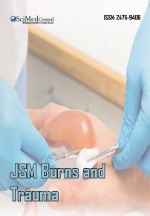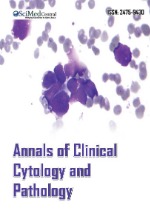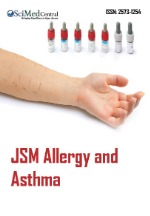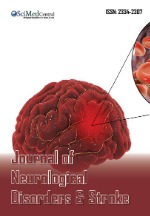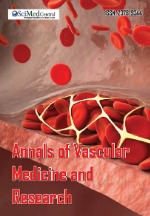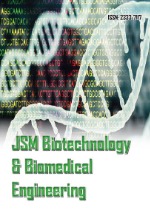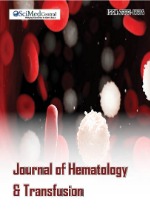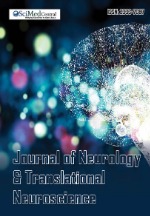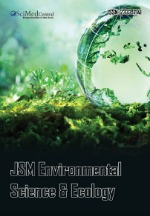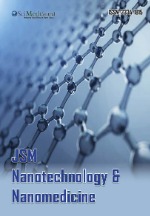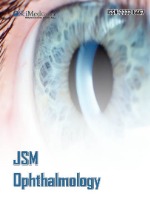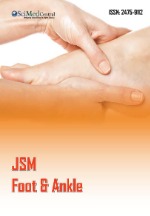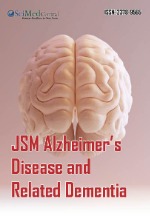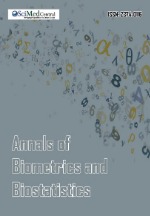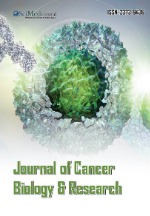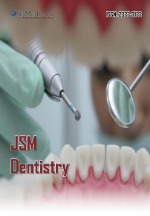Chronic Radiodermatitis
- 1. Department of Cell and Molecular Biology, Gr. T. Popa University of Medicine and Pharmacy, Iasi, Romania
- 2. Department of Dermatology, Gr. T. Popa University of Medicine and Pharmacy, Iasi, Romania
Abstract
Chronic radiodermatitis as a sequel of an acute radiation-induced skin lesion or as a con- sequence of cumulative effect of repeated low doses of radiations is clinically exhibiting tropic telangiectasia plaque, subcutaneous fibrosis, hypo and hyperpigmented maculas.
This paper is about a patient that was admitted in Dermalux Clinic in Iasi, Romania, for an ulcerated lesion on left hemifacial aspect. Since the age of 1.6 months-2 years of age the pa- tient followed radiotherapy for an extensive inherited hemangioma on the mentioned site. Fol- lowing radiotherapy, a hypertrophic scar appeared as the result of a chronic radiodermatitis. Around the age of 5 the scar became hyperpigmented and then showed repeated bleeding episodes. In June 2012 the scar ulcerated thus surgical removal was decided and performed. Pathological examination showed morphological changes that led to diagnosis of mild keratin- ized ulcerated squamous cell carcinoma
Literature data indicate that malignant transformation of a chronic radiodermatitis ap- pears in 10-30% cases following a developmental step of 7-10 years. Regarding subacute evolution and morphologic aspect following biopsy, we may consider that hemangioma to- gether with radiotherapy may represent inductive elements for malignant transformation.
Keywords
• Radiotherapy
• Radiodermatitis
• Hemangioma
Citation
Olinici D, Cotrutz CE , Stoica L, Onofrei P, Botez AE, et al. (2017) Chronic Radiodermatitis – A Favoring Factor to Malignant Transformation – A Case Report. J Dermatolog Clin Res 5(2): 1096.
INTRODUCTION
Radiotherapy frequently induces adverse cutaneous reactions as acute and chronic radiodermatitis or the onset of severe diseases as lichen planus, acne, dermatophytosis, cutaneous lupus erythematosus etc [1].
Among lesions secondary to chronic radiation exposure we may find telangiectasia, irregular hyperpigmentation, atrophies and scars [2]. Acute and chronic radiodermatitis appear secondary to incidental or therapeutic exposure to radiations. Clinical aspects show higher incidence on dorsal aspect of the hands, head skin, neck and face. There are two types of lesions: scleroatrophic and sometimes ulcerated. In scleroatrophic forms, we may observe important epidermal atrophy and hyperkeratosis. In ulcerated forms, the lesion may also involve the hypoderm while the ulceration has no tonus and shows no accompanying inflammatory reaction. Epidermoid carcinogenesis in spinocellular and basocellular form or fibrosarcomas may be developed on such lesions [3,4].
Chronic radiodermatitis is an insidious clinically aspect following X-ray exposure either on low repeated doses or in high doses. In the latter case, skin is dry, rippled, scleroatrophic with parchment like aspect and covered by hypo and hyperpigmented areas close to vascular and keratosic lesions, alopecia and lack of sebaceous glands [5,6]. Telangiectasia is one of the markers in chronic radiodermatitis. Trauma at lesion level is stimulating local ulceration which however may occur spontaneously [5].
Almost all clinical reports show that exposure to ionizing radiations is increasing the risk for basocellular carcinoma development. Melanoma and squamous cell carcinoma development is enhanced by exposure to UVA and chemical agents [7].
CASE PRESENTATION
Material and methods
The patient we are introducing here, aged 36, was addressing Dermalux Clinic in Iasi in September 2012 for showing an ulcerated lesion on the left hemifacial aspect. The patient is a professional in medical field, incoming from urban environment, being a smoker for 8 years. Pathologic issues included an extensive inherited hemangioma, located on left hemifacial aspect, for which she followed monthly X-ray therapy from 1.6 to 2 years of age. The patient declares that at 2 years of age, the radiation amount was higher, while a scar was declared to appear. No dosage for X-ray treatment was available. At 5 years of age, the formed scar became hyperpigmented. During childhood, two bleedings were mentioned at the scar level. Following the first pregnancy (at 21 years of age), hyper-pigmentation was enhanced and telangiectasia appeared.
In early June 2012 the scar ulcerated and thus in July 2012 lesion surgical removal was performed and followed by graft reconstruction from abdominal skin at 5 days postoperatively. It is to mention that 2-3 days before admission in our clinic, the patient showed itching and vesicles on the operated lesion area.
Local clinical examination
In November 2012, hemangioma is stationary with a scar following squamous cellular carcinoma surgical removal. The scar is soft showing no tumor recrudescence. Trauma avoidance is recommended together with daily application of hydrating cream, photopro-tection 50+ and control at 6 months or earlier if required. At 13th of May 2013 – the scar was flat and soft, with stationary flat hemangioma (Figure 1).
Figure 1: Stationary flat hemangioma.
Computed tomography examination
On 13th of September 2012, brain CT showed normal aspects of cerebral hemispheres, metencephalon, ventricular system. No bone structure changes were observed in neurocranium. Left mastoid air cells were hypoplastic and were lacking air inside. Maxillary, frontal, sphenoidal sinuses and ethmoidal/mastoid cells on the right side, were free and air-filled. Right sinusal septum deviation was noted. Orbits and their content had a normal CT aspect.
Gross and microscopic examination
On august 2012, in Clinical Hospital Neamt, gross and microscopic examination showed a scar-like dermo-epidermal sample, with elements of spinocellular carcinoma, with a higher differentiation degree, with keratinization, ulcerated and hemorrhagic (crust of fibrin, RBCs and WBCs).
In September 2012, in Iasi, Romania, Dermalux Clinic, gross and microscopic examination showed squamous cell carcinoma with moderate differentiation, ulcerated and with keratinization. Tumor process is involving the deep dermal layer showing an inflammatory infiltrate rich on lymphocytes and plasmocytes. Perineural tumor infiltration was also observed. Surgical removal line was deeply located into hypoderm, with no tumor infiltration. Excision samples did not allowed the evaluation of surgical removal limits. No vascular invasion was mentioned in the processed samples.
In May 2013, in Iasi clinic, sample processing and microscopic analysis showed the following results (Figures 2-4).
Figure 2: Squamous cellular carcinoma, with dermal infiltration, HE stain, x2.5.
Figure 3: Horizontal thick collagen fibers; lack of skin annexes, rare blood vessels with thickened wall, Scleroderma-like aspect. HE stain, x10.
Figure 4: Squamous cellular carcinoma, with keratinization, and stromal inflammation; HE stain, x20, detail.
DISCUSSION
About 95% of the skin vascular lesions can be identified based on patient interrogation and clinical examination [7,8]. About 90% of hemangiomas are being identified in the first months of life and are located at head and neck level (60%), trunk (25%) and limbs (15%) [9,10].
Hemangiomas are the most frequent benign tumors of the subcutaneous tissues in infants. Their incidence is about 1-3% in newborn [9]. Annual incidence seems to be higher than 0.45% [8]. Most affected infants are females and prematures (mainly over 1500 grams) [9]. Hemangiomas are showing a specific model for fast proliferation and slow spontaneous involution. Full healing was reported in 49% of the children up to 5 years of age and 72% of the children up to 7 years of age; continuous improvement is expected before 12 years of age. Most patients are keeping only minor skin changes [8,9].
Most hemangiomas are small and asymptomatic and thus only clinical surveillance is indicated. In 10-20% cases, hemangiomas may induce local compression and organ displacement in the neighborhood. Hemangiomas may be life threatening while they may associate congestive heart failure, acute respiratory distress or thrombocytopenia (Kasabach-Merritt syndrome) and thus they require prompt treatment and life supporting intervention. Therapeutic approach is thus sometimes difficult to manage. Among therapeutic approach, we may find surgical removal, corticotherapy, embolization, laser surgery and radiotherapy. Few data are available regarding long-term effects of these therapeutic methods. Radiotherapy is an ancient approach, usually destined to treat hemangiomas while they are radiosensitive (mainly age dependent) [6, 8-10].
Many hemangiomas may involve spontaneously. In the past years, irradiation adverse effects on these benign lesions were declared and thus radiotherapy is rarely used nowadays. However, this therapy is indicated in some special cases. During childhood, the major indication for radiotherapy is represented by life threatening complicated lesions for which there are no other alternatives. Literature data showed that corticotherapy and radiotherapy association significantly decreases mortality rate. Few data are available regarding the X-ray dosage and the obtained result.
Some authors reported a dose of 3-8 Gy while others are recommending a total dose of 7.5-14 Gy in 5 to 16 fractions. Plesner-Rasmussen et al. described 3 cases of hemangiomas treated by radiotherapy and reported that the best cosmetic and functional results were obtained for doses of 5-10 Gy. Superficial photon treatment and radioactive implants were used up to 1960. Fragu et al., reported dystrophy risk of 12.1 times higher (p <0.001) for patients that have received a dose of 30 Gy on a larger skin surface compared to the patients that have received a dose of 10 Gy or lower. Furst et al., reported cancer incidence of 1.46% (224 of 15336 patients) in patients with hemangiomas that have received 5-10 Gy of 226Ra or orthovoltage therapy by X-rays compared to 1.26% (34 of 2694 patients) in patients with hemangiomas that had no exposure to radiations. The difference is not statistical significant [8,11,12].
Desmos and Pryvat proposed various options for large hemangiomas localized on the face, as cryotherapy, sclerotherapy and eventually radiotherapy but only after 7 years of age [7].
For our patient, chronic radiodermatitis diagnosis was supported by the hyperpigmentation and telangiectasia lesions appeared during the first pregnancy [5,6].
Premalignant skin lesions require fast diagnosis and
accurate treatment regarding that 20-30% cases are developing epitheliomas, mainly squamous cell carcinomas [5,6].
It is well known that radiation induced skin tumors appear on irradiated areas following large doses but there are no such evidence for long-term exposure. Cutaneous tumors, mainly basocellular carcinoma followed as frequency by squamous cellular carcinoma, represent the main complications for radiotherapy. Carcinoma development following radiotherapy lasts for 2 to 65 years with a mean latency estimated at 20-45 years. In the past decade, many studies support the observation that malignancies appear according to some factors as – radiation type, dosage patient age, post-therapy duration, light exposure, followed by ethnical and genetic factors [2].
CONCLUSIONS
Regarding long-lasting development and morphological aspects emphasized following pathologic examination, we may consider that extensive hemangioma, together with its specific radiotherapy management may represent favoring factors for malignant transformation.
REFERENCES
- Genc M, Yavuz M, Cimsit G, Cobanoglu O, Yavuz A. Radiation port wart: a distinct cutaneous lesion after radiotherapy. J Nat Med Assoc. 2006; 98: 1193-1196.
- Meibodi NT, Maleki M, Javidi Z, Nahidi Y, Clinicopathological evaluation of radiation induced basal cell carcinoma. Indian J Dermatol. 2008; 53: 137-139.
- Fabrikant JI, Dickson RJ, Fetter BF. Mechanisms of Radiation Carcinogenesis at the Clinical Level. Br J Cancer. 1964; 13: 459-477.
- Stoicescu I, Florescu M, SimionescuC, Georgescu C, Margaritescu C. Dermatohisto-patologiepractica. Craiova: Ed. Universitaria, 2006.
- Jia Wei Zheng, Ling Zhang, Qin Zhou, Hua Ming Mai, Yan An Wang, Xin Dong Fan, et al. A practical guide to treatment of infantile hemangiomas of the head and neck. Int J ClinExp Med. 2013; 6: 851-860.
- Duemling WW, Norman CW, Meyer PG. Cutaneous Cancer and Precancerous Lesions. California Medicine. 1964; 100: 279-282.
- Sklar LR, Almutawa F, Lim HW, Hamzavi I. Effects of ultraviolet radiation, visible light, and infrared radiation on erythema and pigmentation: a review. Photochem Photobiol Sci. 2013; 12: 54-64.
- Schwartz JL, Kopecky KJ, Mathes RW, Leisenring WM, Friedman DL, Deeg HJ. Basal cell skin cancer after total-body irradiation and hematopoietic cell transplantation. Radiation Res. 2009; 171: 155- 163.
- Ogino I, Torikai K, Kobayasi S, Aida N, Hata M, Kigasawa H. Radiation Therapy for Life-or Function-threatening Infant Hemangioma. Radiology. 2001; 218: 834-839.
- Wirth FA, Lowitt MH. Diagnosis and treatment of cutaneous vascular lesions. Am Family Phys. 1998; 57: 765-773.
- Zheng JW, Zhou Q, Yang XJ, Wang YA, Fan XD, Zhou GY, et al. Treatment guideline for hemangiomas and vascular malformations of the head and neck. Head Neck. 2010; 32: 1088-1098.
- Saurat JH, Précis de dermatologie et venereology 4e éd. Paris:Ed. Masson, 1999.






